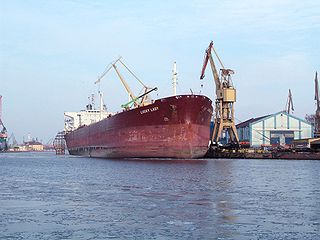Negligence is a failure to exercise appropriate and/or ethical ruled care expected to be exercised amongst specified circumstances. The area of tort law known as negligence involves harm caused by failing to act as a form of carelessness possibly with extenuating circumstances. The core concept of negligence is that people should exercise reasonable care in their actions, by taking account of the potential harm that they might foreseeably cause to other people or property.
A tort is a civil wrong that causes a claimant to suffer loss or harm, resulting in legal liability for the person who commits the tortious act. Tort law can be contrasted with criminal law, which deals with criminal wrongs that are punishable by the state. While criminal law aims to punish individuals who commit crimes, tort law aims to compensate individuals who suffer harm as a result of the actions of others. Some wrongful acts, such as assault and battery, can result in both a civil lawsuit and a criminal prosecution in countries where the civil and criminal legal systems are separate. Tort law may also be contrasted with contract law, which provides civil remedies after breach of a duty that arises from a contract. Obligations in both tort and criminal law are more fundamental and are imposed regardless of whether the parties have a contract.

In tort law, a duty of care is a legal obligation that is imposed on an individual, requiring adherence to a standard of reasonable care to avoid careless acts that could foreseeably harm others, and lead to claim in negligence. It is the first element that must be established to proceed with an action in negligence. The claimant must be able to show a duty of care imposed by law that the defendant has breached. In turn, breaching a duty may subject an individual to liability. The duty of care may be imposed by operation of law between individuals who have no current direct relationship but eventually become related in some manner, as defined by common law.

English tort law concerns the compensation for harm to people's rights to health and safety, a clean environment, property, their economic interests, or their reputations. A "tort" is a wrong in civil law, rather than criminal law, that usually requires a payment of money to make up for damage that is caused. Alongside contracts and unjust enrichment, tort law is usually seen as forming one of the three main pillars of the law of obligations.

Rylands v Fletcher (1868) LR 3 HL 330 is a leading decision by the House of Lords which established a new area of English tort law. It established the rule that one's non-natural use of their land, which leads to another's land being damaged as a result of dangerous things emanating from the land, is strictly liable.

Caparo Industries PLC v Dickman[1990] UKHL 2 is a leading English tort law case on the test for a duty of care. The House of Lords, following the Court of Appeal, set out a "three-fold test". In order for a duty of care to arise in negligence:
Heaven v Pender (1883) was an English tort law case, which foreshadowed the birth of the modern law of negligence.

Canadian tort law is composed of two parallel systems: a common law framework outside Québec and a civil law framework within Québec. Outside Québec, Canadian tort law originally derives from that of England and Wales but has developed distinctly since Canadian Confederation in 1867 and has been influenced by jurisprudence in other common law jurisdictions. Meanwhile, while private law as a whole in Québec was originally derived from that which existed in France at the time of Québec's annexation into the British Empire, it was overhauled and codified first in the Civil Code of Lower Canada and later in the current Civil Code of Quebec, which codifies most elements of tort law as part of its provisions on the broader law of obligations. As most aspects of tort law in Canada are the subject of provincial jurisdiction under the Canadian Constitution, tort law varies even between the country's common law provinces and territories.
In English tort law, an individual may owe a duty of care to another, in order to ensure that they do not suffer any unreasonable harm or loss. If such a duty is found to be breached, a legal liability will be imposed upon the tortfeasor to compensate the victim for any losses they incur. The idea of individuals owing strangers a duty of care – where beforehand such duties were only found from contractual arrangements – developed at common law, throughout the 20th century. The doctrine was significantly developed in the case of Donoghue v Stevenson, where a woman succeeded in establishing a manufacturer of ginger beer owed her a duty of care, where it had been negligently produced. Following this, the duty concept has expanded into a coherent judicial test, which must be satisfied in order to claim in negligence.

Kamloops v Nielsen, [1984] 2 SCR 2 ("Kamloops") is a leading Supreme Court of Canada decision setting forth the criteria that must be met for a plaintiff to make a claim in tort for pure economic loss. In that regard, the Kamloops case is significant because the Supreme Court adopted the "proximity" test set out in the House of Lords decision, Anns v Merton LBC. Kamloops is also significant as it articulates the "discoverability principle" in which the commencement of a limitation period is delayed until the plaintiff becomes aware of the material facts on which a cause of action are discovered or ought to have been discovered by the plaintiff in the exercise of reasonable diligence. This was later adopted and refined in Central Trust Co v Rafuse. Finally, Kamloops develops the law governing circumstances where a plaintiff can sue the government in tort.

Dobson v Dobson, [1999] 2 SCR 753 was a landmark decision by the Supreme Court of Canada on a pregnant woman's legal duties in tort law. It was the first time the Supreme Court of Canada had to consider this issue. The majority of the Court found that tort claims cannot be brought against women for negligence toward the fetus during pregnancy.

Overseas Tankship (UK) Ltd v Morts Dock and Engineering Co Ltd, commonly known as Wagon Mound , is a landmark tort law case, which imposed a remoteness rule for causation in negligence. The Privy Council held that a party can be held liable only for loss that was reasonably foreseeable. Contributory negligence on the part of the dock owners was also relevant in the decision, and was essential to the outcome, although not central to this case's legal significance.
The following outline is provided as an overview of and introduction to tort law in common law jurisdictions:

Smith v Eric S Bush [1990] UKHL 1 is an English tort law and contract law case, heard by the House of Lords. First, it concerned the existence of a duty of care in tort for negligent misstatements, not made directly to someone relying on the statement. Second, it concerned the reasonableness of a term excluding liability under the Unfair Contract Terms Act 1977, s 2(2) and s 11.
Administrative liability in English law is an area of law concerning the tortious liability of public bodies in English law. The existence of private law tort applying to public bodies is a result of Diceyan constitutional theory suggesting that it would be unfair if a separate system of liability existing for government and officials. Therefore, a public body which acts ultra vires is liable in tort is a cause of action can be established just like any individual would be. An ultra vires action will not, per se, give rise to damages Therefore, a claimant will have to fit into one of the recognised private law courses of action. These areas in which a public body can incur private liability in tort were described by Lord Browne Wilkinson in X v Bedfordshire County Council [1995] 3 All ER 353 (HL).

Murphy v Brentwood District Council[1991] UKHL 2, [1991] 1 AC 398 was a judicial decision of the House of Lords in relation to recovery for pure economic loss in tort.

Dutton v Bognor Regis Urban District Council [1972] 1 QB 373 is an English contract law and English tort law case concerning defective premises and the limits of contract damages. It was disapproved by the House of Lords in Murphy v Brentwood DC and is now bad law except in Canada and New Zealand.

Canadian National Railway Co v Norsk Pacific Steamship Co, [1992] 1 SCR 1021 is a leading Supreme Court of Canada decision on pure economic loss in tort law. The court recognized situations in which pure economic loss is compensable. In particular, the court held that relational economic loss falls within the category of losses that are sufficiently proximate to give rise to a duty of care.
Lamb v Camden LBC[1981] EWCA Civ 7, [1981] QB 625 is a leading case in English tort law. It is a Court of Appeal decision on negligence and the test of reasonable foreseeability of damage, especially where the damage has been caused by third parties not the defendant him or herself.

Weir-Rodgers v SF Trust Ltd [2005] IESC 2 is a reported decision of the Irish Supreme Court that confirmed that under Section 4 of the Occupiers Liability Act 1995 an occupier of land is not required to take all reasonable care to safeguard the person or property of either trespassers or recreational users.










